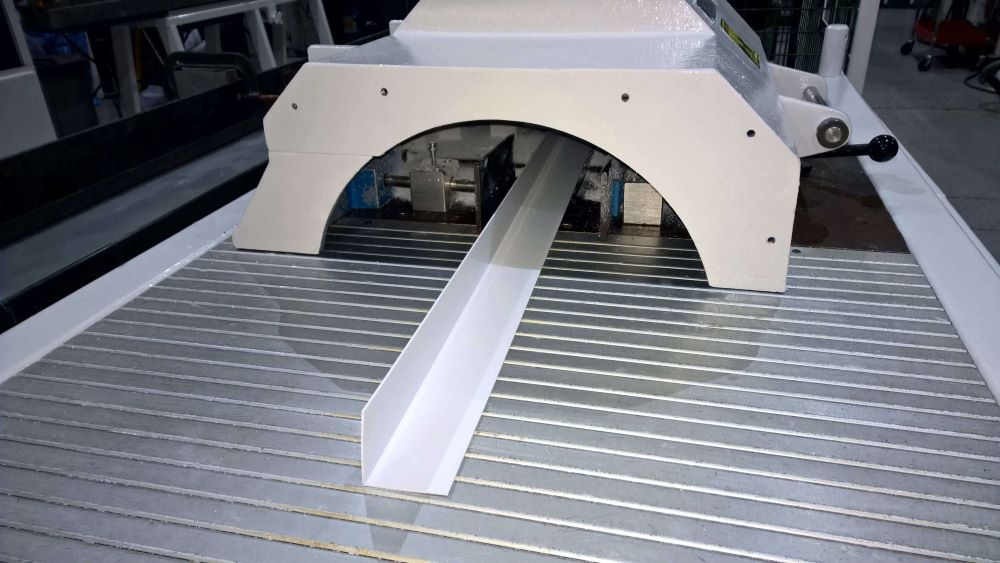
Plastic angle trims are a widely used component used in many types of projects, in sectors including fitout, construction, signage, exhibitions and events. They can offer both functional and aesthetic benefits. At MKM Extrusions, we understand that you may have specific questions regarding our plastic angle trim profiles. Below, we have compiled answers to some of the most frequently asked questions to assist you in making informed decisions.
The questions we will address in this blog are:
- What type of plastic do you use to produce plastic angle trims?
- What sizes are available for plastic angle trims?
- In which colours are your plastic angle trim available?
- What is the best way to fix a plastic angle trim?
- Are samples available for plastic angle trims?
1. What type of plastic do you use to produce plastic angle trims?
Our plastic angle trim is manufactured from external grade rigid PVC, which means it can both be used for both indoor and outdoor applications. Our profiles are sold in 75 metre packs, and each pack of plastic angle trim contains 25 lengths of 3 metres.
2. What sizes are available for plastic angle trims?
We offer plastic angle trim in many different sizes. Our online shop contains approximately 45 different size variations. Plastic L shaped angle trims are specified by the two external depths and thickness. We offer plastic angle trim with either equal or unequal legs. The sizes we offer range from an external depth of 5mm to 100mm.
3. In which colours is your plastic angle trim available?
All the plastic angle trims that are listed in our online shop are available in two colours: black and white. If you require a different colour, then this is also possible for larger orders. This would be a custom order which requires a minimum production run of 2000 metres. Just let us know which RAL colour you require and the size of the profile and we will email you a custom quote.
4. What is the best way to fix a plastic angle trim?
There are three ways to fix plastic angle trim: self-adhesive tape, glue and mechanical fixing such as rivets or screws. The best way to do this depends on your project. For custom plastic extrusions we may be able to apply tape to the angle trim during the manufacturing process. If you wish to fix your plastic angle trim with glue, then we recommend that you contact an adhesive specialist for advice telling them that our rigid PVC is calcium zinc stabilised. You can download our material data sheets which will provide technical information about the raw material properties. Please note that data sheets are not for the finished product.
For more details and to help you decide what the best solution for your project is, please see our blog on ‘how to fix a plastic angle trim’.
5. Are samples available for plastic angle trims?
Yes, you can request free samples of our plastic angle trims. Just send us an email to [email protected] with your address and the product codes of the plastic profiles you are interested in. We will then post you the samples. The samples are pre-cut and are approximately 10 - 15cm in length. This will allow you to check the profile dimensions and colour.
Some other FAQs about plastic angle trims
-
How to cut PVC angle trim?PVC angle trim can be cut using a fine-toothed saw. Cutting slowly helps reduce the risk of chipping.
More about how to cut PVC angle trim -
What is the best tool to cut a plastic angle trim?A saw with a fine-toothed blade is often used for precise and clean cuts on plastic angle trim. The finer the teeth on the blade the better the cut will be.
More about the best tool to cut a plastic angle trim -
What is a plastic angle?A plastic angle is a 90-degree L shaped profile made from rigid PVC, often used to protect or finish corners and edges.
More about what is a plastic angle -
What is angle trim used for?Angle trim is often used for corner protection and edging applications, both indoors and outdoors.
More about what is angle trim used for -
How to cut plastic angle trim corners?To cut plastic angle trim corners, use a fine-toothed saw for the best result.
More about how to cut plastic angle trim corners -
How to attach plastic corner trim?It depends on the application but plastic corner trims are sometimes attached using self-adhesive tape, glue, or mechanical fixings.
More about how to attach plastic corner trim -
How do you bend PVC corner trim?PVC angle trim is made from rigid material, and over a long length it may flex slightly. It is not a soft material and cannot be coiled. Ideally you would need a sample of the material you are wanting to bend and then you can test the properties of that particular profile.
More about bending PVC corner trim -
How to cut PVC angle trim by hand?Using a miter box and a fine-toothed handsaw allows for accurate manual cuts on PVC angle trim.
More about cutting PVC angle trim by hand -
What is a corner trim?A corner trim is usually a 90-degree L shaped profile which is used to protect or finish corners and edges. Some other forms are available such as corner joints.
More about what is a corner trim



